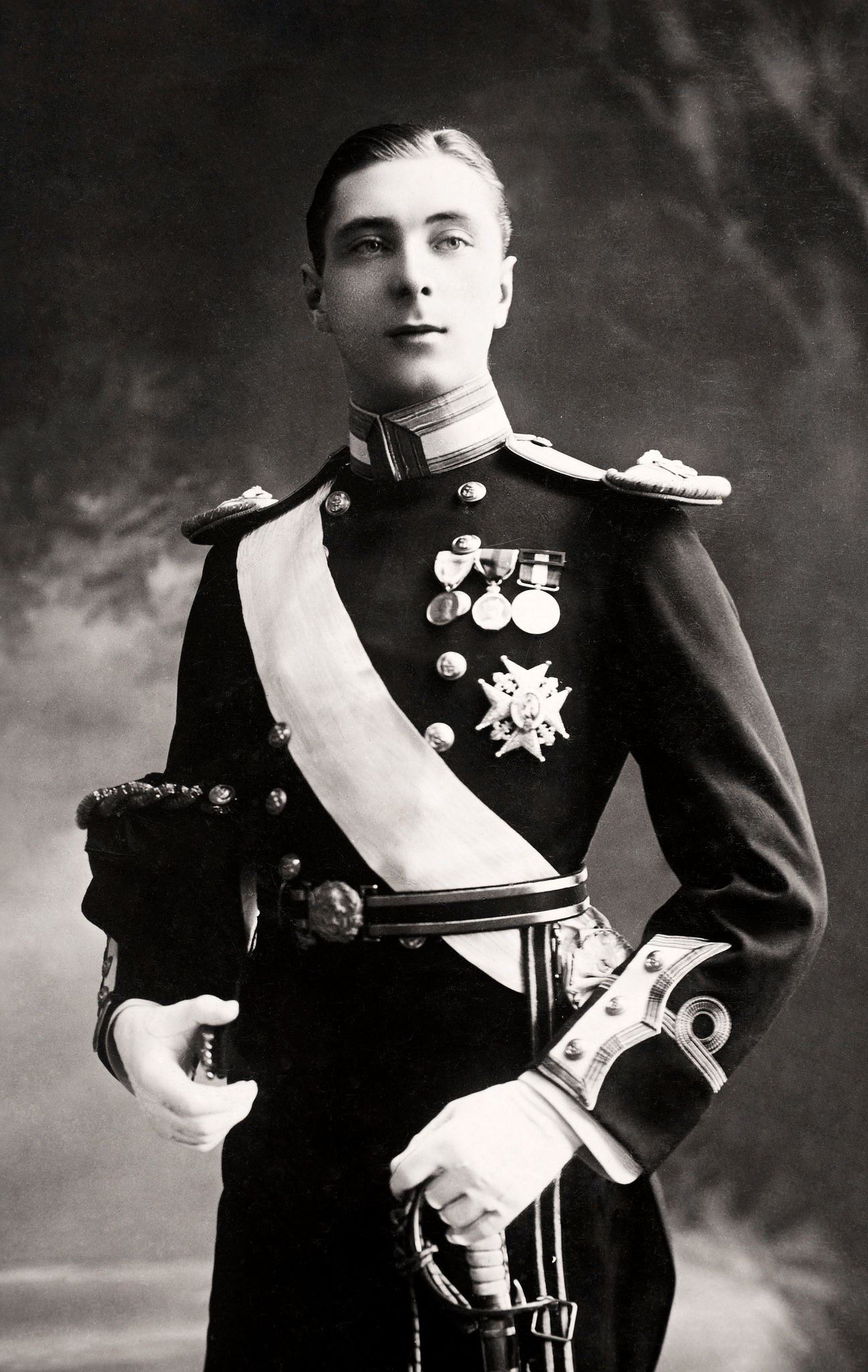by Susan Flantzer
© Unofficial Royalty 2015

Photo Credit – Wikipedia
A grandson of Queen Victoria, Prince Alexander of Battenberg was born at Windsor Castle in Windsor, England on November 23, 1886. He was the eldest of the four children of Princess Beatrice of the United Kingdom and Prince Henry of Battenberg. The infant prince was christened Alexander Albert Victor (known in the family as Drino) on December 18, 1886, at the private chapel at Windsor Castle. His godparents were:
- The Prince of Wales (later King Edward VII, his maternal uncle)
- Alexander, Sovereign Prince of Bulgaria (his paternal uncle)
- Prince Alexander of Hesse and by Rhine (his paternal grandfather)
- Queen Victoria (his maternal grandmother)
- Princess Louise of Wales (his maternal first cousin)
- Princess Irene of Hesse and by Rhine (his maternal first cousin)

Princess Beatrice of Battenberg; Alexander Albert Mountbatten, 1st Marquess of Carisbrooke by W. & D. Downey, albumen cabinet card, circa 1890 NPG Ax5554 © National Portrait Gallery, London
Alexander had two brothers and one sister.
- Princess Victoria Eugenie of Battenberg (1887 – 1969), married King Alfonso XIII of Spain, had issue
- Prince Leopold of Battenberg, later Lord Leopold Mountbatten (1889 – 1922), unmarried, had hemophilia, died following surgery
- Prince Maurice of Battenberg (1891 – 1914), unmarried, killed in action during World War I

Beatrice and her children in 1900; Photo Credit – Wikipedia
Alexander was educated at Stubbington House School, known as “the cradle of the Navy,” in Stubbington, Hampshire, England. The school was located about one mile from The Solent, the strait separates the Isle of Wight from the mainland of England, so it was close to one of his grandmother’s favorite homes, Osborne House, on the Isle of Wight. After finishing at Stubbington, Alexander attended Wellington College in Crowthorne, Berkshire, England. Alexander’s grandmother Queen Victoria laid the foundation stone in 1856 and inaugurated Wellington College’s opening in 1859.
Prince Alexander served in the Royal Navy from 1902-1908. In 1911, he joined the British Army and was commissioned a second lieutenant in the Grenadier Guards. He was promoted to lieutenant in 1913 and in 1915, he was promoted to captain. When World War I started in August of 1914, Alexander’s regiment was under deployment orders, as was the 60th Rifles, the regiment of his brothers Leopold and Maurice. A little more than two months after the war started, Maurice was killed in action on October 27, 1914.

‘T.H. The Princes of Battenberg. For King and Country’ by Bassano Ltd, published by Rotary Photographic Co Ltd, postcard print, published circa 1914 NPG x197402 © National Portrait Gallery, London
Due to anti-German sentiment during World War I, King George V issued Letters Patents on July 17, 1917 “declaring that the name Windsor is to be borne by his royal house and family and relinquishing the use of all German titles and dignities.” Alexander and his brother Leopold relinquished their German styles and titles and anglicized their name to Mountbatten. Alexander was created Marquess of Carisbrooke and Leopold was granted the rank and precedence of the younger son of a marquess, becoming Lord Leopold Mountbatten.
On July 19, 1917, at the Chapel Royal at St. James’ Palace in London, Alexander married Lady Irene Denison, the only daughter of William Denison, 2nd Earl of Londesborough and Lady Grace Fane, daughter of Francis Fane, 12th Earl of Westmorland and Lady Adelaide Curzon. Because the wedding was during World War I, there were no bridesmaids or formal reception.

Irene, Marchioness of Carisbrooke; Photo Credit – http://theesotericcuriosa.blogspot.com
Alexander and Irene had one daughter:
- Lady Iris Victoria Beatrice Grace Mountbatten (1920 – 1982), married 1) Captain Hamilton O’Malley, divorced, no issue; married 2) Michael Bryan, divorced, had issue; married 3) William Kemp, no issue

Lady Iris Victoria Beatrice Grace Kemp (née Mountbatten) by Bassano Ltd, whole-plate film negative, 26 November 1934 NPG x151240 © National Portrait Gallery, London
In 1919, Alexander resigned from the British Army and was placed in the General Reserve as a captain. He began a business career and started work as a clerk in the offices of the bank Lazard Brothers. Alexander also worked for the Metropolitan Housing Corporation which controlled many housing estates for artisans, and Alexander eventually took full charge of the social work connected with the estates. Later he became a director of Lever Brothers and several other companies.

Alexander Albert Mountbatten, 1st Marquess of Carisbrooke by Henry Walter (‘H. Walter’) Barnett, vintage bromide print, 1905-1920 NPG x45408 © National Portrait Gallery, London
Early in World War II, Alexander joined the Royal Air Force and served as a staff officer attached to Sir Trafford Leigh-Mallory, a senior commander in the Royal Air Force. After World War II, Alexander lived at King’s Cottage, overlooking Kew Gardens, one of the grace and favor houses at the disposal of the Sovereign. He spent his last years living in apartments at Kensington Palace. Alexander’s wife Irene died in 1956. Her ashes were interred at St. Mildred’s Church in Whippingham, Isle of Wight, England. Alexander died from a cerebral hemorrhage at Kensington Palace in London, England on February 23, 1960, at the age of 73. Alexander’s ashes were placed in the wall above his parents’ tomb at St. Mildred’s Church. The peerage Marquess of Carisbrooke became extinct upon his death. Alexander was the last surviving grandson of Queen Victoria.
This article is the intellectual property of Unofficial Royalty and is NOT TO BE COPIED, EDITED, OR POSTED IN ANY FORM ON ANOTHER WEBSITE under any circumstances. It is permissible to use a link that directs to Unofficial Royalty.
